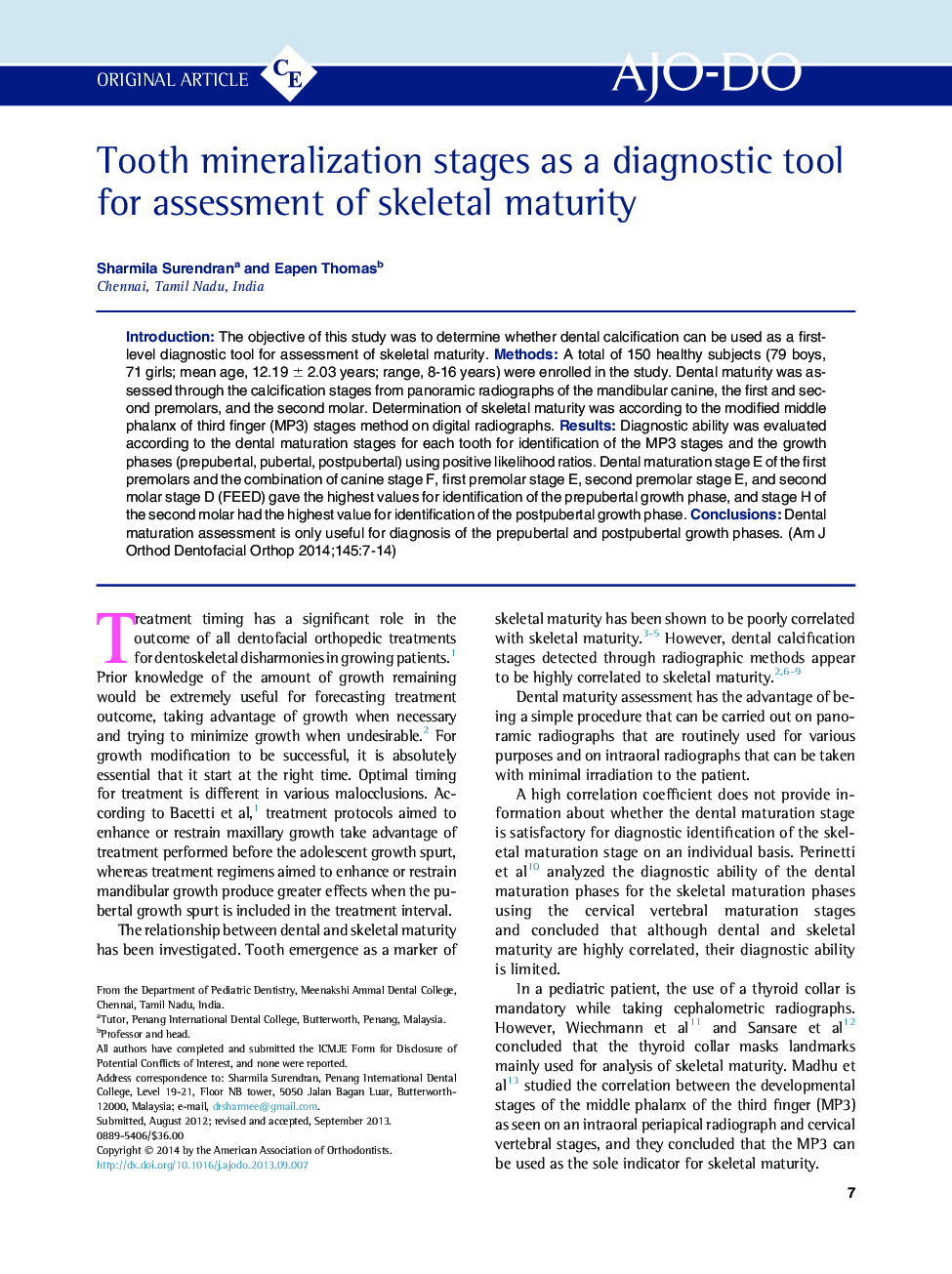| Article ID | Journal | Published Year | Pages | File Type |
|---|---|---|---|---|
| 3116203 | American Journal of Orthodontics and Dentofacial Orthopedics | 2014 | 8 Pages |
IntroductionThe objective of this study was to determine whether dental calcification can be used as a first-level diagnostic tool for assessment of skeletal maturity.MethodsA total of 150 healthy subjects (79 boys, 71 girls; mean age, 12.19 ± 2.03 years; range, 8-16 years) were enrolled in the study. Dental maturity was assessed through the calcification stages from panoramic radiographs of the mandibular canine, the first and second premolars, and the second molar. Determination of skeletal maturity was according to the modified middle phalanx of third finger (MP3) stages method on digital radiographs.ResultsDiagnostic ability was evaluated according to the dental maturation stages for each tooth for identification of the MP3 stages and the growth phases (prepubertal, pubertal, postpubertal) using positive likelihood ratios. Dental maturation stage E of the first premolars and the combination of canine stage F, first premolar stage E, second premolar stage E, and second molar stage D (FEED) gave the highest values for identification of the prepubertal growth phase, and stage H of the second molar had the highest value for identification of the postpubertal growth phase.ConclusionsDental maturation assessment is only useful for diagnosis of the prepubertal and postpubertal growth phases.
